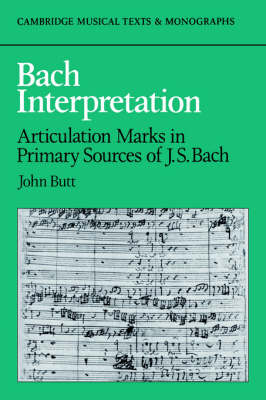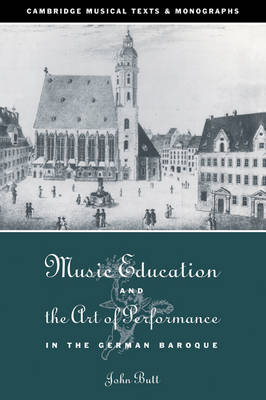Cambridge Musical Texts and Monographs
2 total works
This study is a comprehensive assessment of J. S. Bach's use of articulation marks (i.e. slurs and dots) in the large body of primary sources. Dr Butt analyses the role of such markings within the compositional process, how they relate to the norms of articulation of the period, and how they might assist us in a deeper understanding and evaluation of Bach's style. With its extensive catalogue of the most common slurring patterns based on a study of over 100 concerted vocal works, this book is invaluable both for performers on all baroque instruments, and for scholars with an interest in Bach's style and source studies. It also contributes to our perception of Bach's position in music history: the purpose of music in the Lutheran Germany of Bach's time and its rhetorical power; the close relationship between composer and performer within the context of 'practical' music; and the functions and development of notation.
In considering the role of practical music in education, this book attempts to define the art of performance in Germany during the Baroque period. The author examines the large number of surviving treatises and instruction manuals used in the Lutheran 'Latin' schools during the period 1530-1800 and builds up a picture of the function and status of music in both school and church. The understanding, gained through these educational texts, of music as a functional art - musica practica - in turn gives us insight into the thoughts of the contemporary performer and how he might have performed the sacred work of Praetorius, Schutz, Buxtehude or Bach. For all those interested in historical performance this book provides valuable information on the growing science of performance practice and the development of a conscious awareness of style and idiom in this period.

